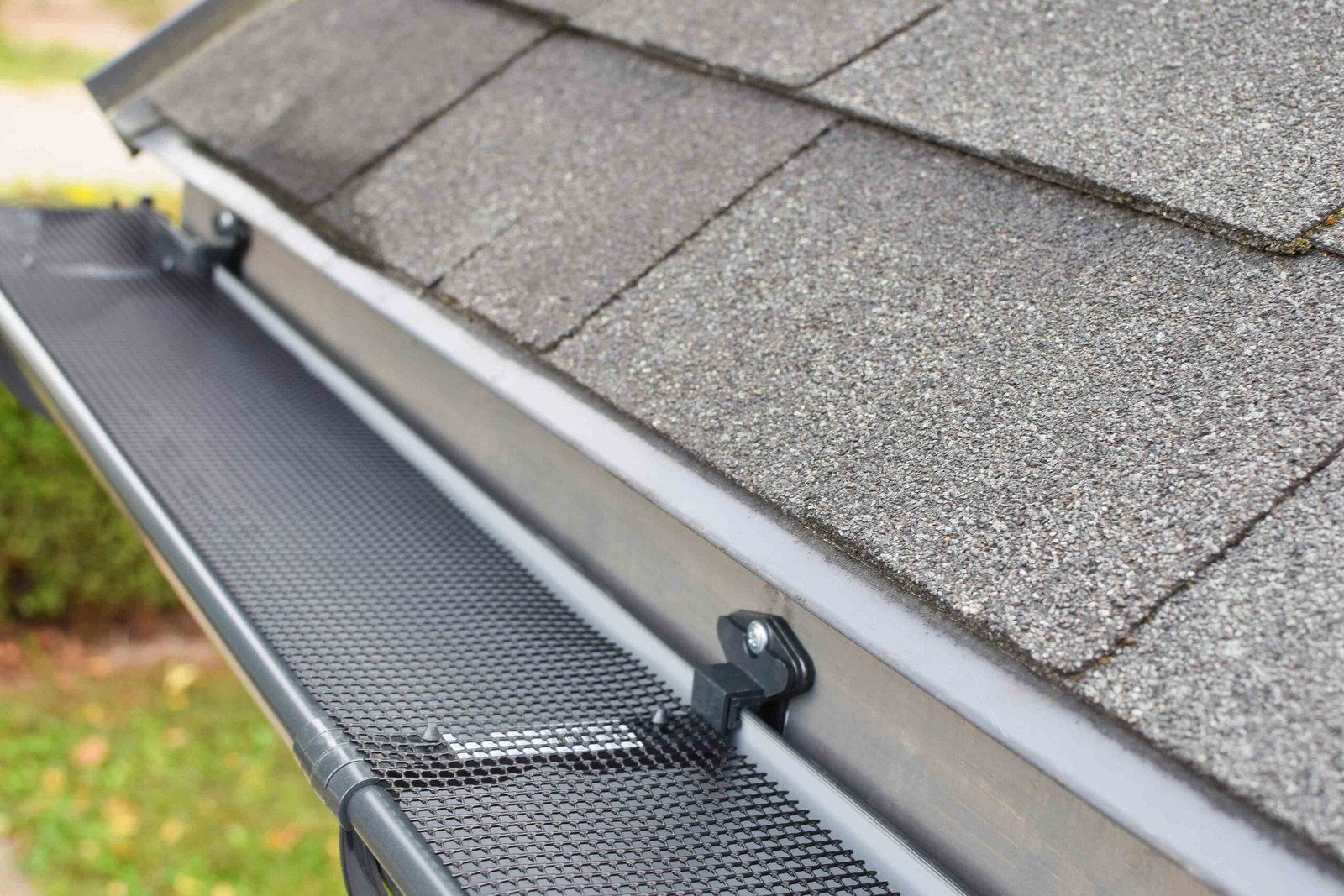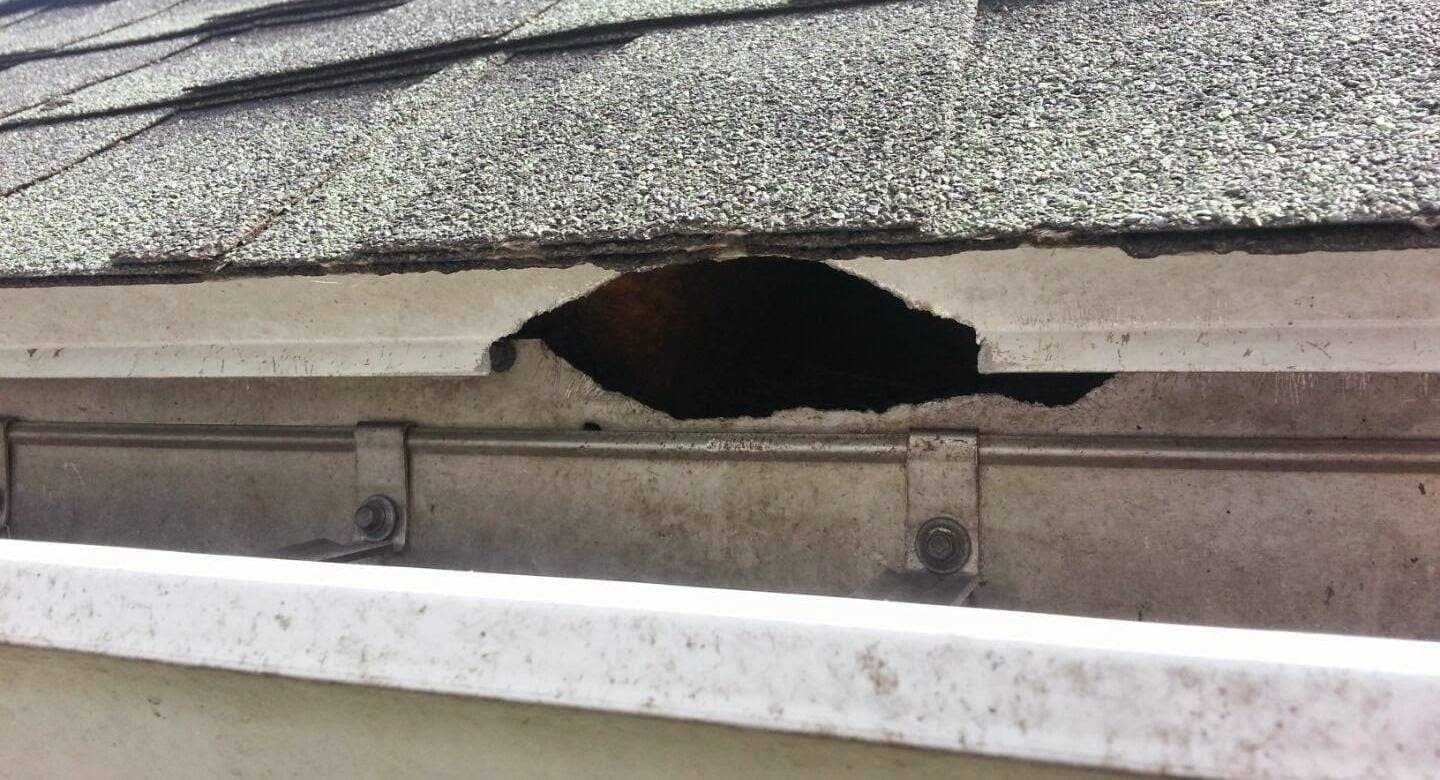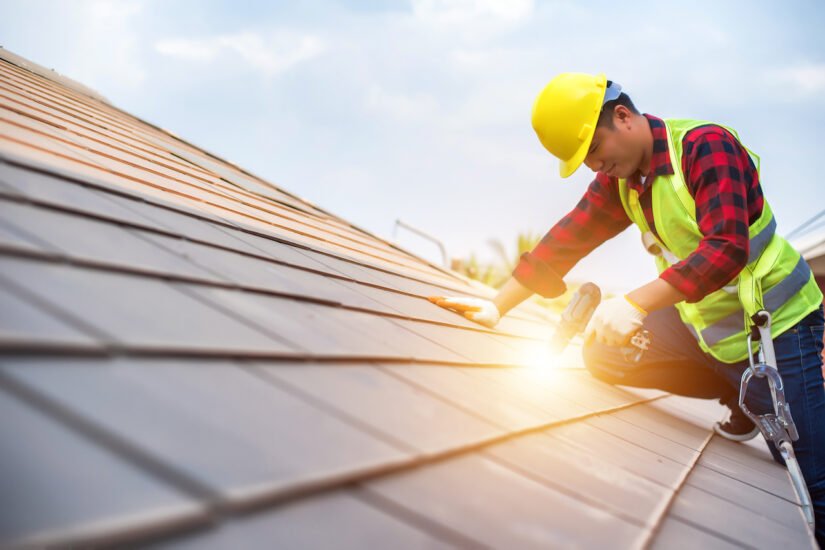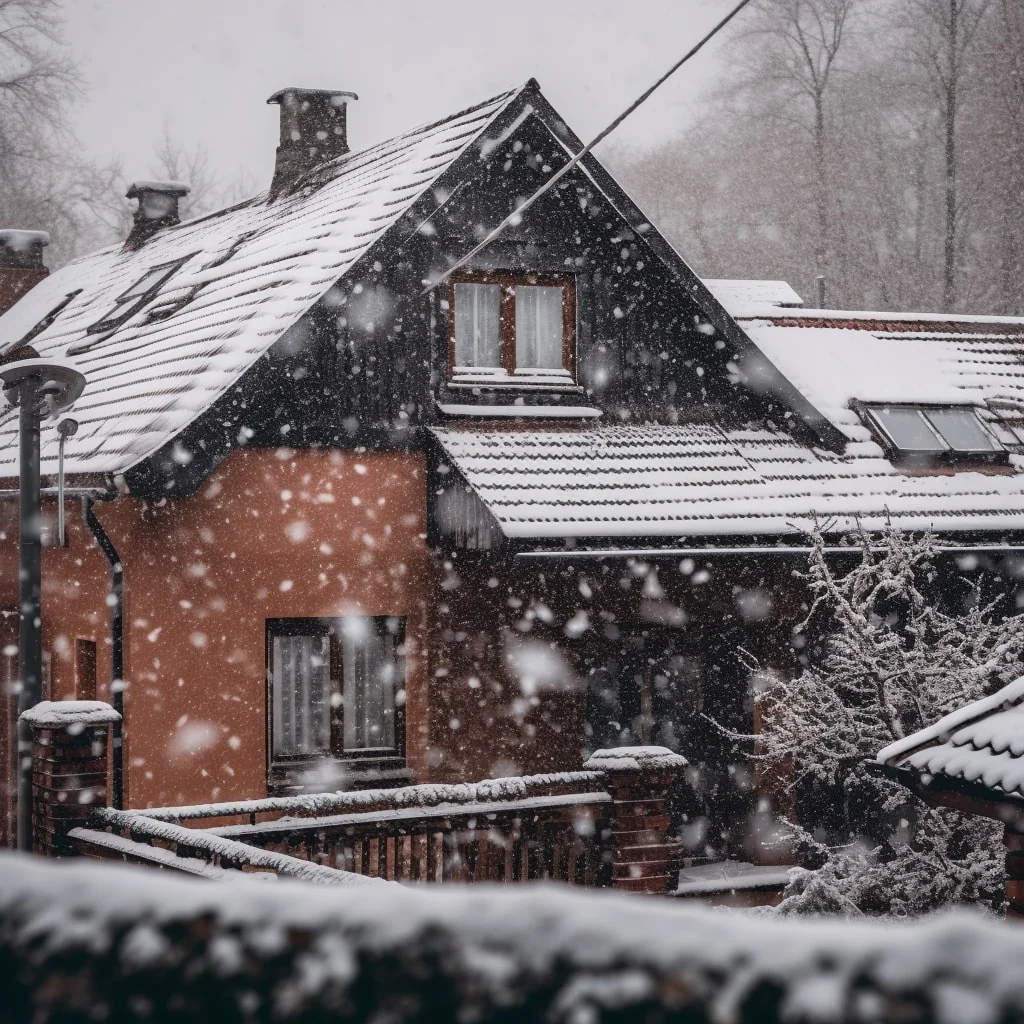The article highlights various signs of roof danger and instability, such as a sagging roof, cracking noises, severe leaks, doors popping open, and cracks in the wall.
The significance of preventing roof collapse is emphasized due to the potential dangers it poses to both individuals and property.
The article also offers advice on clearing snow from the roof using a snow rake and avoiding metal tools to prevent electrical accidents.
Furthermore, it provides tips for safely removing icicles using an extendable ladder, hammer, or ice pick.
Signs of Roof Danger and Instability
Signs of roof danger and instability can be identified by observing a sagging roof, as well as by hearing cracking, popping, or creaking noises, which indicate roof instability.
A comprehensive roof inspection is essential to detect any potential structural damage. During the inspection, it is important to look for signs of a sagging roof, such as visible dips or depressions. Additionally, any cracking, popping, or creaking noises should be noted as they can indicate underlying roof instability.
Structural damage, such as cracks in the walls or doors suddenly popping open, should also be included in the inspection. By thoroughly examining these indicators, one can assess the overall stability of the roof and take necessary actions to prevent any potential hazards.
Preventing Roof Collapse
Structural instability can be mitigated by promptly addressing visible indicators of roof damage. To prevent roof collapse, it is crucial to be aware of roof stability indicators. By recognizing these signs, homeowners can take the necessary steps to ensure the safety of their property and loved ones.
Here are three key roof collapse prevention measures:
- Regular inspection: Conduct routine inspections to identify any signs of damage or deterioration. Look for sagging roofs, severe leaks, and cracking, popping, or creaking noises. These indicators suggest roof instability and should be addressed promptly.
- Reinforcement: Strengthen the roof structure by adding additional supports or braces. Consult with a professional to determine the best methods for reinforcing your specific roof type and design.
- Timely repairs: Act immediately to repair any identified roof issues. Ignoring problems can lead to further damage and increase the risk of a roof collapse. Engage the services of a qualified roofing contractor to ensure proper repairs are carried out.
Clearing Snow From the Roof
To safely remove snow from the roof, homeowners should use a snow rake to clear off the accumulated snow along the roof’s slope. Snow removal tools, such as snow rakes, are designed specifically for this purpose.
It is important to start at the bottom and work your way up to prevent any additional weight from being added to the roof. When using a snow rake, it is recommended to avoid metal ones to prevent electrical accidents. Instead, opt for a plastic or wooden snow rake.
Roof snow removal techniques involve being cautious and not getting on the roof to clear off the snow, as this can be dangerous. By utilizing a snow rake, homeowners can effectively remove snow from their roofs and prevent any potential hazards that may arise from excessive snow accumulation.
Removing Icicles Safely
Icicles can pose risks to both individuals and the structural integrity of a building. To ensure safety when removing icicles, it is important to follow proper procedures. Here are some tips to remove icicles safely:
- Use ladders safely: When using a ladder, make sure it is stable and placed on a level surface. Avoid overreaching or leaning to prevent falls.
- Prevent damage to eaves troughs: Be cautious when using a ladder near eaves troughs to avoid putting pressure on them, as this can lead to damage.
- Use appropriate tools: Use an extendable ladder to reach higher icicles safely. Additionally, using a hammer or ice pick can help dislodge icicles without causing damage to the roof or gutters.
Preventing Leaky Roofs
Insufficient insulation and poor ventilation can contribute to the formation of ice dams and subsequent water leaks in a building. During winter, warm air escaping from the interior can melt snow on the shingles. As a result, water can accumulate and back up underneath the shingles, leading to leaks.
To prevent this, it is essential to maintain proper insulation and ventilation in the building. Regularly checking and maintaining the insulation can help ensure that heat loss is minimized, reducing the likelihood of ice dams and leaks.
Additionally, if a roof leak is detected, prompt repair is necessary to prevent further damage. Seeking professional assistance for roof leak repair is recommended, as they have the expertise and tools to address the issue effectively.
Proper insulation maintenance and timely roof leak repair are crucial in preventing leaky roofs and maintaining the integrity of the building.
Insulating Your Roof
Adequate insulation is crucial for maintaining a stable and energy-efficient environment within a building. Insulation provides several benefits, including reducing heat loss, improving energy efficiency, preventing condensation and moisture buildup, and enhancing the overall comfort of the space.
There are various types of insulation materials available, each with its own unique properties and advantages. Some common types include:
- Fiberglass insulation: Made from tiny glass fibers, this type of insulation is affordable, easy to install, and provides excellent thermal insulation.
- Cellulose insulation: Made from recycled paper or plant fibers, cellulose insulation is environmentally friendly and effective at reducing both heat transfer and noise.
- Spray foam insulation: This insulation material expands to fill gaps and crevices, creating a seamless layer of insulation that helps to minimize air leakage and improve energy efficiency.
These different types of insulation materials offer homeowners and builders flexibility in choosing the most suitable option for their specific needs.
Maintaining Gutters and Downspouts
Regular maintenance of gutters and downspouts is essential for ensuring proper water drainage and preventing potential damage to the building’s foundation. Neglecting gutter maintenance can lead to clogged gutters, which can result in water overflow and pooling around the foundation, causing structural damage over time. To emphasize the importance of gutter maintenance, the following table highlights key tasks and their frequency:
| Task | Frequency |
|---|---|
| Cleaning gutters | Twice a year (spring, fall) |
| Checking for leaks | Annually |
| Inspecting downspouts | Annually |
| Clearing debris | As needed |
Cleaning gutters involves removing leaves, twigs, and other debris that can accumulate and obstruct water flow. Checking for leaks and inspecting downspouts ensure that water is properly channeled away from the building. Clearing debris should be done as needed to prevent clogs. Regular maintenance of gutters and downspouts is a proactive measure that can prevent costly repairs and maintain the integrity of the building’s foundation.
Hiring Professional Roof Inspections
Regular roof inspections are crucial for maintaining the safety and integrity of a roof. Hiring licensed roof inspectors offers several benefits.
Firstly, these professionals have the expertise and knowledge to identify any potential issues or damages that may compromise the roof’s stability. They can assess the overall condition of the roof, including the materials, structure, and drainage systems.
Secondly, regular inspections can help detect problems early on, preventing them from escalating into more serious and costly issues. This proactive approach can save homeowners from expensive repairs or even the need for a full roof replacement.
Lastly, hiring licensed roof inspectors ensures that the inspections are conducted according to industry standards and regulations, providing homeowners with peace of mind and the assurance that their roof is in good hands.



